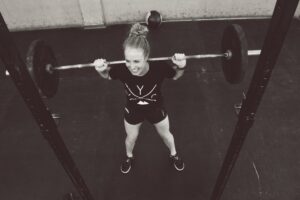Movement isn’t black and white. Are you doing yourself a disservice?

You are not a cookie cut-out. So, why should you be expected to move like one? We all have our unique anatomical quirks in regard to skeletal structures, joint range of motion, muscle strength and elasticity, and how our body responds to our environmental stimuli.
20% of people have asymmetrical hip sockets. How do you expect to squat well and pain free if your body literally disagrees with the “toes forward and feet hip width apart” mentality? Some people may require a wider stance, an asymmetrical stance, and/or an outward turned foot or feet to squat well.
Undergoing functional movement screenings is important to discover these “quirks,” whether they be movement/strength deficiencies or literally anatomical barriers by isolating movement patterns. Isolating movement patterns eliminates guess-work and variables that disguise the true underlying issue of why you may be experiencing pain or limitation with your movements.
Functional movement screenings and assessments allow for a systematic approach to be created to address, correct, and improve movement patterns. When it comes to your body, your programming shouldn’t be a guessing game.
Ann (name changed for privacy) experienced pain in her hip and the inability to engage her gluteal muscles when she squatted. She had worked with several personal trainers who told her different normative “tips” in order to improve her squat, however little improvement was made.
Under a watchful eye, Ann had an individual versed with functional assessment knowledge, analyze her movement patterns. After evaluation it was discovered that Ann, like most, has asymmetrical hips and a rotated pelvis (and long femurs). For Ann, the traditional squat stance went out the window, because she needed to create room within her squat for her femur to move freely without smashing into her hip socket. She now has an “untraditional” squat stance, and has found her squat slowly improving!

Remember, you’re unique. Technique is very real and very important, but also understanding your body’s limitations and how to adapt to them is just as important in order to improve technique, strength, movement, and overall quality of life.
Written by: Nicole Crofts